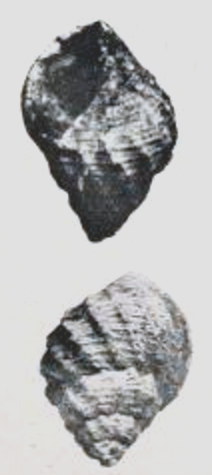Cordieria ovalis facts for kids
Quick facts for kids Cordieria ovalis |
|
|---|---|
 |
|
| Two views of a shell of Cordieria ovalis | |
| Scientific classification | |
| Synonyms | |
|
Borsonia (Cordieria) ovalis P. Marshall, 1917 (original combination) |
Cordieria ovalis is a type of sea snail. It's a marine gastropod mollusk, which means it's a creature with a soft body and usually a shell, like other snails and slugs. This particular snail belongs to the family called Borsoniidae.
About the Cordieria ovalis Snail
This section will tell you more about what this interesting sea snail looks like and where it lives.
What Does It Look Like?
The shell of the Cordieria ovalis snail is quite small. It can grow up to 13 millimeters (about half an inch) long and 9 millimeters wide.
When scientists first described this snail, they noted its unique features:
- It has an oval-shaped shell with a short, pointed top part called a spire.
- The spire has four spiral turns, or whorls, that get smaller quickly towards the tip.
- These whorls are slightly rounded.
- The opening of the shell, called the aperture, is oval-shaped and is a little less than half the length of the whole shell.
- The outer edge of the opening (the outer lip) is thick.
- Inside the shell, there's a central pillar called the columella. This snail's columella has three clear folds.
- The shell's surface has about 15 raised ridges, called costae, on each whorl. These ridges run from one spiral seam (the suture) to the next. They also curve slightly backward.
- There are also many sharp, spiral lines or threads on the shell. These threads are sometimes broken, especially over the ridges.
- On the largest and last turn of the shell, known as the body whorl, the ridges become less noticeable towards the bottom. However, many of the spiral threads continue into the shell's opening.
- Because of its strong ridges and texture, this shell has a somewhat rough but very distinct look.
The very first specimen of this snail that scientists used to describe the species, called the holotype, is kept at the Wanganui Museum in New Zealand.
Where Does It Live?
This marine snail is found only in New Zealand. This means it is "endemic" to New Zealand, and you won't find it naturally anywhere else in the world.

